Description
The instruction for medical use
of Triplixam® medicine
the Trade name
of Triplixam®
the International unlicensed name
Is not present
the Dosage form
of the Tablet, film coated 2.5 mg / 0.625 mg / 5 mg, 5 mg / 1.25 mg / 5 mg, 5 mg / 1.25 mg / 10 mg, 10 mg / 2.5 mg / 5 mg and 10 mg / 2.5 mg / 10 mg
Structure
One tablet contains
active agent –
tablets of 2.5 mg / 0.625 mg / 5 mg: perindoprit arginine of 2.5 mg (1.69755 mg of a perindopril), indapamid 0.625 mg are equivalent, an amlodipina of the besilat of 6.935 mg (5.0 mg of an amlodipin are equivalent)
tablets of 5 mg / 1.25 mg / 5 mg: perindoprit arginine of 5.0 mg (3.395 mg of a perindopril), indapamid 1.25 mg are equivalent, an amlodipina of the besilat of 6.935 mg (5.0 mg of an amlodipin are equivalent)
tablets of 5 mg / 1.25 mg / 10 mg: perindoprit arginine of 5.0 mg (3.395 mg of a perindopril), indapamid 1.25 mg are equivalent, an amlodipina of the besilat of 13.87 mg (10.0 mg of an amlodipin are equivalent)
tablets of 10 mg / 2.5 mg / 5 mg: perindoprit arginine of 10.0 mg (6.79 mg of a perindopril), indapamid 2.5 mg are equivalent, an amlodirina of the besilat of 6.935 mg (5.0 mg of an amlodipin are equivalent)
tablets of 10 mg / 2.5 mg / 10 mg: perindoprit arginine of 10.0 mg (6.79 mg of a perindopril, indapamid 2.5 mg are equivalent, an amlodirina of the besilat of 13.87 mg (10.0 mg of an amlodipin are equivalent)
excipients: calcium carbonate, cellulose microcrystalline, sodium of a kroskarmelloz, magnesium stearate, silicon dioxide colloidal anhydrous, starch prezhelatinizirovanny
cover: Glycerin, a gipromelloza, a macrogoal 6000, magnesium stearate, the titan dioxide (E 171), the water purified
the Description
of the Tablet of an oval form, film coated white color with the squeezed-out symbol on one party of a tablet and on other party (for a dosage of 2.5 mg / 0.625 mg / 5 mg),
Tablets of an oval form, film coated white color, with the squeezed-out symbol on one party of a tablet and on other party (for a dosage of 5 mg / 1.25 mg / 5 mg),
Tablets of an oval form, film coated white color, with the squeezed-out symbol on one party of a tablet and on other party (for a dosage of 5 mg / 1.25 mg / 10 mg),
Tablets of an oval form, film coated white color, with the squeezed-out symbol on one party of a tablet and on other party (for a dosage of 10 mg / 2.5 mg / 5 mg),
Tablets of an oval form, film coated white color, with the squeezed-out symbol on one party of a tablet and on other party (for a dosage of 10 mg / 2.5 mg / 10 mg)
Pharmacotherapeutic group
the Drugs influencing a system renin-angiotensin. AKF inhibitors in a combination with other drugs. AKF inhibitors, other combinations. Perindopril, amlodipin and indapamid
the ATX C09BX01 Code
the Pharmacological
Triplixam Pharmacokinetics properties is a combination of three antihypertensive components with additional mechanisms for control of arterial blood pressure at patients with hypertensia. Salt of a perindopril of arginine is angiotensin-converting enzyme inhibitor, indapamapid is the diuretic containing chlorsulfamoit, and amlodipin – inhibitor of outflow of calcic ions of dihydropyridinic group.
Action mechanism
Perindopril:
Perindopril is angiotensin-converting enzyme inhibitor (APF inhibitor) which turns angiotensin I into angiotensin II, sosudosuzhayushchy substance, besides, this enzyme stimulates secretion of Aldosteronum in bark of adrenal glands and stimulates decomposition of bradykinin, vasodilating substance, on inactive heptapeptides.
Results:
decrease in secretion of Aldosteronum,
increase in activity of renin in plasma as Aldosteronum does not send negative information,
decrease in the general vascular resistance, in particular in vessels of muscles and kidneys, without the accompanying delay of salt and water or reflex tachycardia at chronic treatment.
Antihypertensive action of a perindopril was also noted at patients with low or normal concentration of renin.
Perindopril acts by means of the active metabolite, the perindoprilat. Other metabolites are not active.
Perindopril reduces cardiac performance thanks to:
to vasodilating action on veins, perhaps, owing to changes in metabolism of prostaglandins: to decrease in preloading,
decrease in the general peripheral resistance: decrease in an afterload.
The researches conducted on patients with heart failure showed:
decrease in the filling pressure of the left and right ventricles,
decrease in the general resistance of peripheral vessels,
increase in warm emission and improvement of cardiac index,
increase in regional blood circulation in a muscle.
The test for physical activity also showed improvement.
Indapamid:
Indapamid is derivative sulfonamide with a ring of an indole and pharmacological is connected with group of thiazide diuretics. Indapamid inhibits a sodium reabsorption in a segment of a cortical dilyution. Increases discharge with urine of sodium and chlorides and, to a lesser extent, discharge of potassium and magnesium, thus increasing the volume of urine and having antihypertensive effect.
Amlodipin:
Amlodipin is inhibitor of an influx of calcium ions of dihydropyridinic group (a slow blocker of channels or the antagonist of calcium ions) and inhibits transmembrane influx calcium ions in unstriated muscles of heart and vessels.
Pharmacodynamics
Perindopril/indapamid:
At patients with hypertensia, despite their age, the combination perindopril/indapamid renders dose-dependent antihypertensive effect on diastolic and systolic arterial blood pressure in a dorsal decubitus or standing. During clinical trials the combined use of a perindopril and indapamid led to synergistic antihypertensive action in comparison with the same drugs accepted separately.
Perindopril:
Perindopril actively acts at all degrees of hypertensia: easy, moderate or heavy. Decrease in systolic and diastolic arterial blood pressure is noted in prone positions and standing. Antihypertensive action after a single dose is maximum between 4 and 6 hours and remains within 24 hours. There is high extent of residual blockade of angiotensin-converting enzyme in 24 hours approximately for 80%.
At patients who react to treatment the normalization of arterial blood pressure is reached in a month and keeps without tachyphylaxis phenomenon.
Cancellation of treatment has no ricochet effect on hypertensia.
Perindopril is characterized by vasodilating action and restores elasticity of the body of the main arteries, corrects gistomorfometrichesky changes in resistance of arteries and leads to decrease in a hypertrophy of a left ventricle.
If necessary addition of thiazide diuretics results in additive synergy.
The angiotensin-converting enzyme inhibitor combination with thiazide diuretic reduces the risk of a hypopotassemia connected with use of only one diuretic.
Indapamid
Indapamid in the form of monotherapy has 24-hour antihypertensive effect. This effect is had in doses at which the effect of diuretic is minimum.
Its antihypertensive action is proportional to improvement of pliability of a vascular wall and decrease in the general and arteriolar peripheral vascular resistance.
Indapamid reduces a hypertrophy of a left ventricle.
When the dose of thiazide and tiazidopodobny diuretics is exceeded, the antihypertensive effect reaches the plateau whereas side effects continue to increase. If treatment is inefficient, the dose should be raised.
Besides, it was shown that during short-term, average and long-term use for patients with hypertensia indapamid:
– does not influence metabolism of lipids: triglycerides, LDL-cholesterol and LPVP-cholesterol,
– does not affect metabolism of karbogidrat even at hypertensive patients with diabetes.
Amlodipin
Mekhanizm of antihypertensive action of an amlodipin is caused by the direct weakening action on unstriated muscles of vessels. Mekhanizm according to whom amlodipin reduces stenocardia, is not defined definitely, but amlodipin reduces the general ischemic loading thanks to two actions.
Amlodipin expands peripheral arterioles and thus reduces the general peripheral resistance (afterload) with which heart works. As heart rate remains stable, this effect lowering load of heart reduces consumption of energy and oxygen requirement of a myocardium.
The mechanism of action of an amlodipin also possibly includes expansion of the main coronary arteries and coronary arterioles both in normal, and in ischemic sites. This expansion increases supply of oxygen to a myocardium at patients with a spasm of coronary arteries (Printsmetal’s stenocardia or alternative stenocardia).
At patients with hypertensia the dosage of times a day leads to clinically significant lowerings of arterial pressure in a dorsal decubitus and standing within 24 hours. Owing to the slowed-down beginning of action amlodipin it is not appointed in acute hypertensia. Amlodipin has no undesirable metabolic effect and does not lead to changes of lipids in plasma and, thus, is suitable for use at patients with asthma, diabetes and gout.
Indications
– for treatment of essential hypertensia at the patients accepting at the same time perindoprit, indapamid and amlodipin in the same doses as fixed of a combination.
The route of administration and doses
is recommended to take the Drug in the morning to food, 1 times a day.
The combination with the fixed dose is not suitable for initial therapy. If it is necessary to change a dosage, it is necessary to carry out titling of individual components.
Side effects
Very often (& gt, 1/10), it is frequent (& gt, 1/100, & lt, 1/10), infrequently (& gt, 1/1000, & lt, 1/100), is rare (& gt, 1/10000, & lt, 1/1000), is very rare (& gt, 1/10000), frequency is not established (on the basis of the available data it is not possible to carry out the development frequency assessment).
Often
– dizziness, a headache, paresthesia
– vertigo
– a dysgeusia
– disorders of vision
– sudden reddening
– hypotension (and effects of hypotension)
– cough, short wind
– an abdominal pain, a constipation, diarrhea, dyspepsia, nausea, vomiting
– an itching, rash, makulopapulyarny rash
– muscular spasms, hypostasis of ankles, an asthenia
Infrequently
– an eosinophilia
– a hypoglycemia, giperkaliyemiy, reversible at drug withdrawal
– a hyponatremia
– insomnia
– changes of mood (including uneasiness), disturbance of mood
– a depression
– sleep disorders, drowsiness
– a hypesthesia
– a tremor, a syncope
– a diplopia
– a ring in ears, heart consciousness, tachycardia
– a vasculitis
– a bronchospasm
– dryness in a mouth
– changes of a rhythm of defecation
– a small tortoiseshell, hypersensitivity
– an alopecia, a purpura, decolouration of skin, a dieback
– a hyperhidrosis
– reactions of photosensitivity
– pemphigoid
– an arthralgia, myalgia, a dorsodynia
– urination disturbances, nocturia, the increased urination frequency
– a renal failure
– erectile dysfunction
– a gynecomastia, a stethalgia
– an indisposition
– peripheral hypostasis
– a hyperthermia
– increase in weight, weight reduction
– increase in level of urea, a bilirubin kreatininaa in blood
is rare
– fatigue
– hypostasis
– increase in level of enzymes of a liver
is Very rare
– an agranulocytosis
– aplastic anemia
– a pancytopenia, a leukopenia, a neutropenia
– decrease in level of hemoglobin and a hematocrit
– hemolytic anemia
– allergic reactions
– a hyperglycemia
– a hypercalcemia
– confusion of consciousness
– a hyper tone
– peripheral neuropathy
– stenocardia
– arrhythmias (including bradycardia, ventrikulyarny tachycardia and an atrial fibrillation)
– a myocardial infarction, it is possible, again, owing to excessive hypotension at patients with high risk
– a stroke, it is possible, again, owing to excessive hypotension at patients with high risk
– rhinitis
– eosinophilic pneumonia
– a hypertrophic ulitis
– pancreatitis, gastritis, hepatitis, jaundice, an abnormal liver function
– a multiformny erythema, exfoliative dermatitis
– Stephens-Johnson’s Syndrome, the Toxic epidermal necrolysis
– a Quincke’s edema
– an acute renal failure
Frequency is not established
– exhaustion of reserves of potassium with a hypopotassemia, is especially serious for some populations with high risk
– polymorphic ventricular tachycardia like “pirouette” (potentially fatal)
– a possibility of development of hepatic encephalopathy in case of a liver failure
– possible deterioration in earlier available sharp system lupus erythematosus
– on the electrocardiogram lengthening of QT
– increase in level of glucose in blood
– increase in level of uric acid in blood
– weakening
of the Contraindication
– hypersensitivity to the active agents, other sulfonamides derivative of dihydropyridine, other APF inhibitors or excipients
– patients with not treated dekompensirovanny heart failure
– a heavy renal failure (the clearance of creatinine is lower than 30 ml/min.)
– the renal failure of moderate severity (the clearance of creatinine is lower than 60 ml/min.) at doses of Triplixama® containing 10mg/2.5mg combinations of a perindoprila/indapamid (i.e. Triplixam® 10mg/2.5mg/5mg and 10mg/2.5mg/10mg)
– – in the anamnesis a Quincke’s disease (Quincke’s edema) connected with intake of APF inhibitor in the past
– a hereditary/idiopathic Quincke’s disease
– pregnancy
– the lactation period
– hepatic encephalopathy
– a heavy abnormal liver function
– a hypopotassemia
– heavy hypotension
– shock, including and cardiogenic shock
– obstruction of output department of a left ventricle (e.g., an aortal stenosis of high degree)
– hemodynamically unstable heart failure after an acute myocardial infarction
– simultaneous use together with aliskireny at patients with diabetes or a renal failure (SKF & lt, 60ml/min/1.73m2)
Medicinal interactions
Joint uses of lithium and a combination of a perindoprila/indapamid usually is not recommended.
Usually the combined use of a perindopril and kaliysberegayushchy drugs, additives of potassium or kaliysoderzhashchy substitutes is not recommended.
Some drugs or therapeutic classes can increase hyperpotassemia cases: aliskiren, potassium salts, kaliysberegayushchy diuretics, APF inhibitors, antagonists of receptors of angiotensin-II, NPVS, heparins, immunnodepressant as cyclosporine or takrolimus, Trimethoprimum. The combination of these drugs increases risk of a hyperpotassemia.
The combined use is contraindicated: aliskiren: at patients with diabetes or a renal failure the risk of a hyperpotassemia increases, renal function worsens and increases cordial sosudistvaya incidence and mortality.
At patients with the established atherosclerosis, heart failure or diabetes without defeat of trailer bodies the combined therapy with APF inhibitor and a blocker of receptors of angiotensin leads to higher frequency of hypotension, faints, hyperpotassemias and deteriorations in renal function (including an acute disorder of function of kidneys) in comparison with monotherapy use renin-angiotensin-aldosteronovoy a system. Double blockade (e.g., combination of APF inhibitor with the antagonist of receptors of angiotensin II) has to be limited to individually certain cases at careful control of renal function, levels of potassium and arterial blood pressure.
Kaliysberegayushchy diuretics, potassium additives or kaliysoderzhashchy substitutes of salt can lead to significant increase in content of potassium in serum. If the accompanying use in view of the expressed hypopotassemia is shown, drugs have to be used with extra care and with frequent monitoring of content of potassium in serum and the ECG.
Baclofenum enhances expressiveness of hypotensive effect (it is necessary to control the ABP level and to adjust a dose of Triplixam®.
Non-steroidal anti-inflammatory drugs (NPVS), including acetylsalicylic acid in a dose 3g/put, inhibitors of cyclooxygenase-2 (TsOG-2) and non-selective NPVS, reduce hypotensive effect of AKF inhibitors. Besides, it is noted that NPVS and AKF inhibitors render additive effect on increase in level of potassium in blood plasma, leading to deterioration in function of kidneys. The specified action has reversible character, but the acute renal failure, especially at patients with a renal failure, for example, at elderly patients in rare instances can develop or at an obezvozhennost. At such patients before an initiation of treatment it is necessary to estimate functional activity of kidneys and, if necessary, to provide sufficient hydration of an organism. At the beginning of combination therapy and also periodically during therapy, it is necessary to carry out monitoring of function of kidneys.
Joint intake of AKF inhibitors and antidiabetic drugs (insulin, oral hypoglycemic drugs) can lead to strengthening of hypoglycemic effect, especially in the first weeks of therapy and at patients with a renal failure.
Nekaliysberegayushchy diuretics: after the beginning of therapy by APF inhibitor at the patients accepting diuretics especially at what exhaustion of reserves of liquid and/or salt is noted arterial blood pressure can fall. Perhaps, hypotensive influence can be reduced having cancelled diuretic, having increased the volume of liquid or intake of salts prior to therapy with the low and gradually increasing doses of a perindopril.
In arterial hypertension when the previous treatment by diuretics could cause exhaustion of reserves of salts/liquid, it is necessary to stop intake of diuretic prior to treatment by APF inhibitor then subsequently it will be possible to add nekaliysberegayushchy diuretic or to begin intake of APF inhibitor with a low dose, gradually increasing.
At treatment of stagnant heart failure diuretics intake of APF inhibitor should be begun with very low dose, perhaps, after a dose decline of nekaliysberegayushchy diuretic.
In all cases the renal function (creatinine level) should be controlled within the first weeks of therapy with use of APF inhibitors.
Antiarrhytmic drugs of the class IA (quinidine, hydroquinidine, Disopyramidum), antiarrhytmic drugs of class III (Amiodaronum, dofetilid, ibutilid, a bretylium, sotalol), some neuroleptics (Chlorpromazinum, tsiamemazin, levomepromazinum, thioridazine, trifluoperazin), benzamides (amisulpirid, Sulpiridum, tiaprid), phenyl propyl ketone derivatives (Droperidolum, a haloperidol), Pimozidum, bepridit, sizaprid, difemanit, sultoprid, erythromycin (intravenously), galofantrin, mizolastin, moxifloxacin, pentamidine, sparfloksatsin, Vincaminum (intravenously), methadone, astemizol, terfenadin in a combination with indapamidy increase risk of developing ventricular arrhythmia (in particular, Bouveret’s ventricular disease like “pirouette”). The hypopotassemia contributes to the development of this effect in this connection constant control of level of potassium, timely correction if necessary and monitoring of an interval of QT is necessary.
At the simultaneous use of an indapamid and drugs reducing potassium level (Amphotericinum B intravenously, glyuko- and mineralokortikoida at system use, tetrakozaktid, the stimulating depletive) risk of development of a hypopotassemia increases.
At joint purpose of Triplixam®s cardiac glycosides it is necessary to consider that the hypopotassemia can strengthen toxic effect of cardiac glycosides. It is necessary to control the level of potassium and the ECG and, if necessary, to adjust therapy.
The combined use of the inductors CYP3A4 (e.g., rifampatsin, a St. John’s wort pronzennolistny) can lead to decrease in concentration of an amlodipin in plasma. Amlodipin it is necessary to use with care together with the inductors CYP3A4.
The combined use of an amlodipin with strong or moderate CYP3A4 inhibitors (protease inhibitors, azolny antifungal drugs, macroleads as erythromycin or klaritromitsin, verapamil or diltiazem) can lead to significant increase in exposure of an amlodipin.
Corticosteroids and tetrakozaktid reduce hypotensive action of Triplixam® (the delay of water and salt caused by action of corticosteroids).
The concomitant use of hypotensive drugs of other groups can lead to strengthening of hypotensive effect.
At the combined intake of AKF inhibitors with Allopyrinolum, cytostatics or immunodepressants, system corticosteroids or procaineamide the risk of development of a leukopenia increases.
AKF inhibitors can exponentiate hypotensive effect of some anesthetizing drugs.
Preliminary therapy by diuretic drugs in high doses, especially at patients with decrease in OCK and/or electrolytic disturbances, at the beginning of therapy by AKF inhibitor can lead to the significant decrease in the ABP and risk of approach of hypotension.
The patients undergoing injection therapy by gold drugs have rare messages about nitritoidny reactions (face reddening, nausea, vomiting and hypotension) (aurotimalat gold) and the accompanying treatment by AKF inhibitors.
Lactic acidosis against the background of intake of metformin is connected, apparently, with a functional renal failure which is caused by action of an indapamid. It is not necessary to use metformin if the level of serumal creatinine exceeds 1.5 mg/dl (135 µmol/l) at men and 1.2 mg/dl (110 µmol/l) – at women.
In the considerable dehydration of an organism caused by intake of diuretic drugs the risk of developing a renal failure against the background of use of iodinated contrast agents in high doses increases. Before use of iodinated contrast agents it is necessary to carry out rehydration.
At simultaneous use with salts of calcium the increase in content of calcium in blood plasma as a result of decrease in its excretion with urine is possible.
At use of Triplixam®na a background of constant use of cyclosporine creatinine level in plasma even increases at the normal state of water and electrolytic balance.
The combined use of repeated doses of 10 mg of an amlodipin from 80 mg simvastatiny led to 77% to increase in exposure of a simvastatin in comparison with monotherapy simvastatiny. It is necessary to limit a dose of a simvastatin to 20 mg a day at the patients accepting amlodipin.
Special instructions
Double blockade the system renin-angiotensin-aldosteronovoy (SRAA)
Hypotension, a faint, a stroke, a hyperpotassemia and changes of renal function (including an acute disorder of renal function) were noted at susceptible people, especially at the combined use of the drugs operating on this system. Thus, double blockade system renin-angiotensin-aldosteronovoy along with intake of inhibitor of angiotensin-converting enzyme (iAPF) with a blocker of receptors of angiotensin II (SCONCE) or aliskireny is not recommended.
The combined use together with aliskireny is contraindicated at patients with diabetes or a renal failure (SKF & lt, 60ml/min/1.73m2).
Neutropenia/agranulocytosis/thrombocytopenia/anemia
the Neutropenia, an agranulocytosis, thrombocytopenia and anemia were noted at the patients receiving APF inhibitors. At patients with normal renal function and without other complicating factors, the neutropenia happens seldom. Perindopril it is necessary to use with extreme care at patients with collagenoses, at reception of immunodepressants, Allopyrinolum or procaineamide, or in the presence of otyagayushchy factors, especially, if in the anamnesis there is a renal failure. At some of these patients heavy infections which in certain cases did not respond to treatment by antibiotics developed. If such patients accept perindoprit, it is recommended to carry out periodically the analysis of a leukocytic formula, and patients should report about any symptoms of an infection (e.g., a sore throat, fever) (see Section 4.8).
Hypersensitivity / a Quincke’s disease
the Quincke’s disease of the face, extremities, lips, language, a throat and/or throat was seldom noted at the patients receiving treatment by angiotensin-converting enzyme inhibitors, including perindoprit. It can develop in the treatment period at any time. In such cases it is necessary to stop at once reception of a perindopril, to hospitalize the patient and to begin the corresponding monitoring to make sure that all symptoms disappeared to the patient’s extract. When only the face and lips swelled, the state usually passes without treatment though for relief of symptoms also antihistamines are used.
The Quincke’s disease of a throat can be fatal. Involvement of language, a throat or throat can lead to disturbance of passability of airways, it is necessary to begin at once the corresponding treatment, to make a subcutaneous injection of solution of epinephrine 1:1000 (0.3 ml – 0.5 ml) and/or to take measures for ensuring passability of airways.
Patients with angioneurotic hypostasis in the anamnesis, regardless of therapy by APF inhibitors, can have the increased risk of developing a Quincke’s edema at intake of APF inhibitors.
Seldom at the patients accepting APF inhibitors the Quincke’s disease of intestines was noted. Patients complained of an abdominal pain (with nausea or vomiting or without them), in certain cases the Quincke’s disease of the person ostutstvovat in the anamnesis and C-1 levels of esterase were normal. The diagnosis of a Quincke’s disease was made by means of procedures, including KT or ultrasonography of a stomach, or during operation, and symptoms disappeared after the termination of intake of APF inhibitor. The Quincke’s disease of intestines should be included in the differential diagnosis of the patients accepting APF inhibitors with an abdominal pain.
Anaphylactoid reactions during desensitization
were separately allocated reports on patients at which long-term, life-threatening anaphylactoid reactions at intake of APF inhibitors were noted during the desensibilizing treatment by poison of hymenopterous insects (a bee, a wasp). APF inhibitors should be taken with caution to allergichny patients at desensitization and to avoid completely that who passes an immunotherapy poison. Nevertheless, these reactions can be prevented, having temporarily cancelled APF inhibitors, at least, in 24 hours prior to treatment at patients who need to carry out a desensibilazation and to use APF inhibitors.
Anaphylactoid reactions during LPNP-afereza
Life-threatening anaphylactoid reactions were seldom noted at the patients accepting APF inhibitors during an aferez of lipoproteids of the low density (LDL) dextran sulfate. These reactions could be avoided, temporarily stopping treatment by APF inhibitors before carrying out an aferez.
Patients on a hemodialysis
Anaphylactoid reactions were marked out at patients to whom carried out dialysis by membranes with high hydraulic permeability (e.g., AN 69®) and who at the same time accepted APF inhibitor. These patients should use other type of a membrane for dialysis or other class of antihypertensive drug.
Hepatic encephalopathy
When function of a liver is broken, use of thiazide and tiazidopodobny diuretics can lead to development of hepatic encephalopathy. If it occurs, it is necessary to stop intake of diuretic at once.
Photosensitivity
When using thiazide and tiazidopodobny diuretics photosensitivity cases were noted. It is recommended to stop treatment if during treatment the reaction of photosensitivity is noted. If necessary to resume treatment diuretic recommends to protect the places which are affected by beams of the sun or UF of a range And artificial origin.
Precautionary measures when using
Function of kidneys
In a heavy renal failure (clearance of creatinine & lt, 30 ml/min.) treatment is contraindicated.
To patients with a renal failure of moderate severity (clearance of creatinine & lt, 60 ml/min.) treatment of Triplixamom® in a dosage 10mg/2.5mg is contraindicated to a combination of a perindoprila/indapamid (i.e. Triplixam® 10mg/2.5mg/5mg and 10mg/2.5mg/10mg).
To some patients with hypertensia who have no disease of kidneys in the anamnesis, but blood test indicates a functional renal failure, it is necessary to stop treatment and in case of its resuming to use a smaller dosage or one component of drug.
These patients have to control often levels of potassium and creatinine after two weeks of treatment and then every two months during the period of therapeutic stability. The renal failure was generally noted at patients with heavy heart failure or a background renal failure, including a renal artery stenosis.
Usually drug is not recommended in case of a bilateral stenosis of renal arteries or existence of one fuktsioniruyushchy kidney.
Risk of arterial hypotension and/or renal failure (in case of heart failure, exhaustion of reserves of water and electrolytes, etc.): when using a perindopril the considerable stimulation system renin-angiotensin-aldosteronovoy was noted, especially in considerable exhaustion of reserves of water and electrolytes (a rigid diet with restriction of sodium or long intake of diuretics) at patients with initially low level of arterial blood pressure, in cases of a renal artery stenosis, stagnant heart failure or cirrhosis with hypostasis and ascites.
Blockade of this system inhibitor of angiotensin-converting enzyme can lead, especially at the first appointment and within the first two weeks of treatment, to an unexpected lowering of arterial pressure and/or increase in level of creatinine in plasma that indicates a functional renal failure. The onset can be acute, though is rare, and time before emergence of signs varies.
In such cases the treatment should be begun with low doses with gradual increase. For patients with coronary heart disease or cerebrovascular disorder the excessive hypotension can lead to a myocardial infarction or disturbance of cerebral circulation.
Thiazide and tiazidopodobny diuretics are fully effective only when renal function is normal or is only slightly broken (creatinine levels at the adult are about 25 mg/l lower, t.e. 220 µmol/l).
At elderly people the creatinine level indicators in plasma have to be considered adjusted for age, weight and a floor.
The hypovolemia which developed again owing to loss of water and sodium when using diuretic in an initiation of treatment leads to decrease in glomerular filtration. It can cause increase in levels of urea and creatinine in blood. This passing functional renal failure has no undesirable consequences at patients with normal renal function, but, nevertheless, can worsen earlier being available renal failure.
Amlodipin it is possible to use in normal doses at patients with a renal failure. Changes in concentration of an amlodipin in plasma are not connected with degree of a renal failure.
Hypotension and exhaustion of reserves of water and sodium
– Is available risk of unexpected hypotension in the conditions of earlier available exhaustion of reserves of sodium (in particular for patients with a renal artery stenosis). Thus, it is necessary to check systematically presence of symptoms of exhaustion of reserves of water and electrolytes which can happen at the accompanying episode of diarrhea or vomiting. Such patients should watch regularly the level of electrolytes in plasma.
In considerable hypotension performing intravenous infusion of isotonic normal saline solution can be necessary.
Passing hypotension is not a contraindication for therapy continuation. After restoration of satisfactory volume of blood and arterial blood pressure the treatment can be resumed on lower dose or only with one component.
Any diuretics can lead to decrease in level of sodium that can have serious consequences. Decrease in level of sodium can proceed asimptomatichno in the beginning and, thus, it is extremely important to carry out analyses regularly. Analyses should be carried out more often to elderly people and patients with cirrhosis.
Potassium levels
the Combination of an indapamid with perindoprily and amlodipiny does not prevent the beginning of a hypopotassemia, especially at patients with diabetes or a renal failure. As well as in a case with use of any antihypertensive drug in combination with diuretic, it is regularly necessary to check potassium level in plasma.
At some patients accepting APF inhibitors, including perindoprit, increase in level of potassium in serum was noted. Risk factors for development of a hyperpotassemia are the following states: the renal failure, deterioration in function of kidneys, age (& gt, 70 years), diabetes, epiphenomena, in particular, dehydration, a sharp warm decompensation
to Develop





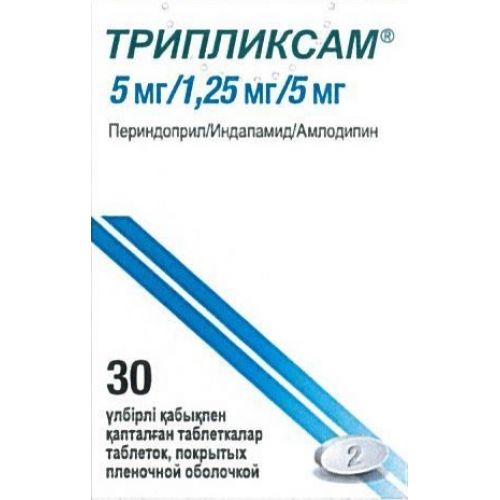
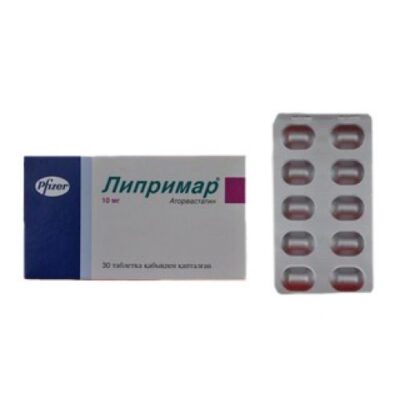
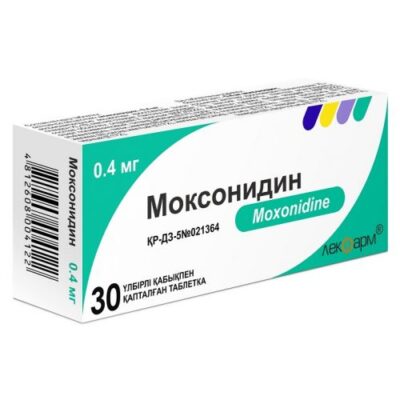
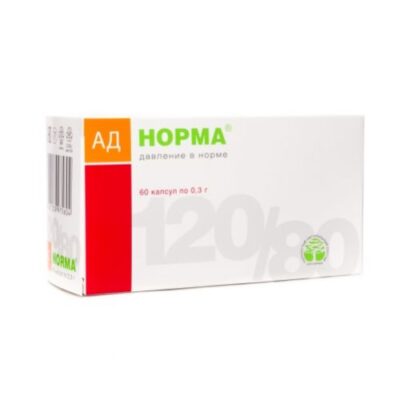
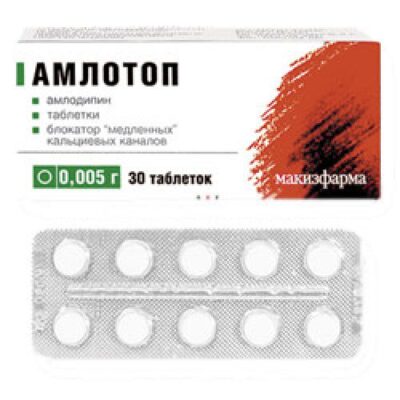
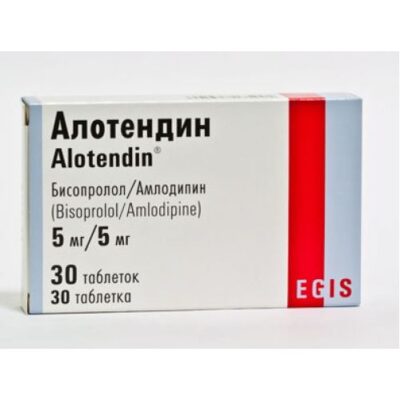
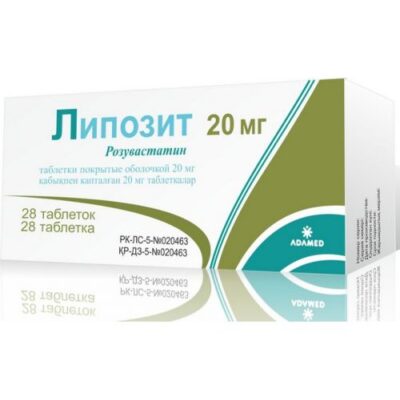
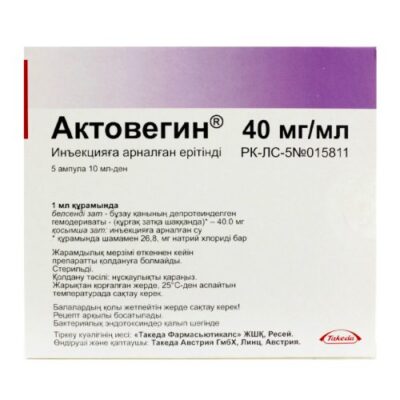
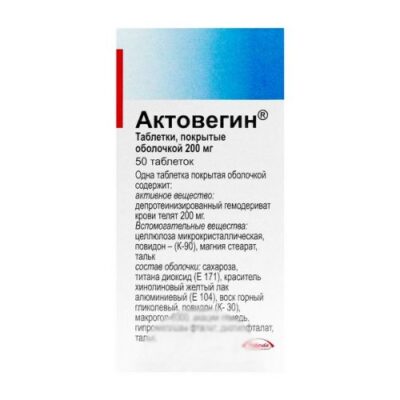
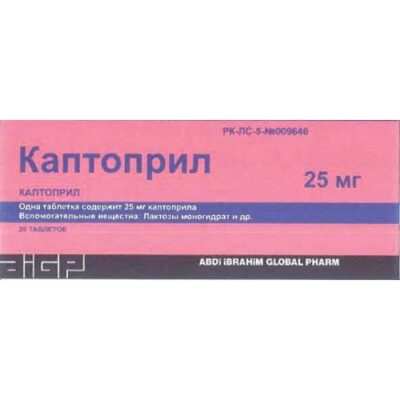
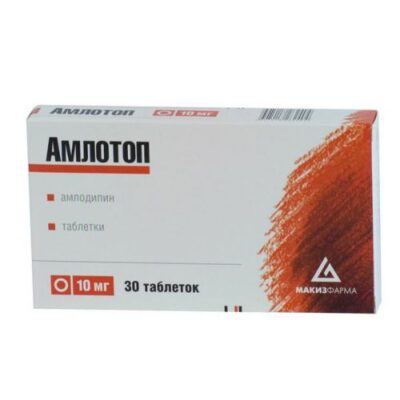






Oscar Pleitez
I need the medicscion for My wife